Cabbage and Cauliflower Nutrient deficiency symptoms
Cabbage and Cauliflower Nutrient deficiency symptoms
Whip-tail
In this condition, the leaf blades do not develop properly and become strap like. The growing point is severely deformed and no marketable curd is formed. This condition in cauliflower results because of the deficiency of molybdenum which occurs in acidic soils below 4-5 pH.
Correction measures: It may be controlled by liming the soil which reduces the acidity and increases the soil pH up to 6.5. It may also be controlled by the application of 1-2 kg/ac of sodium or ammonium molybdate.
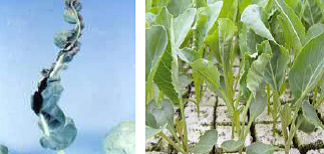
Browning
Browning is a common problem in cauliflower. In this the stem becomes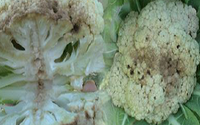 hollow and the curd becomes brown. Affected curds develop a bitter taste. Browning occurs because of the deficiency of boron.
hollow and the curd becomes brown. Affected curds develop a bitter taste. Browning occurs because of the deficiency of boron.
Correction measures: This condition may be controlled by the application of borax or sodium borate @ 20 kg per hectare. In case of acute deficiency, spray of 0.25 to 0.50% solution of borax @ 1-2 kg/ac will give satisfactory results. It has been reported that boron and molybdenum increase curd size and weight as well as ascorbic acid content when applied together.
Buttoning
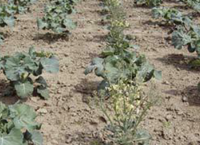
This disorder of cauliflower is identified by the development of small curd or 'button' while the plants are small and consequently the curd gets open. This is caused due to the deficiency of nitrogen, by planting seedlings older than 6 weeks, or any other factors that cause check in growth in the early stage of seedlings. These factors may be insufficient moisture supply, water logging, hot and dry weather, carelessness in proper and timely weeding and pest and disease attack. If an early variety is grown 37 late, its growth is checked due to lower temperature and the curds remain under sized or buttoned.
Such factors should be avoided to get proper size of the curd.
Riceyness
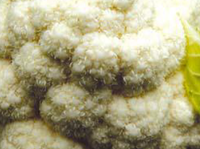
A premature initiation of floral buds in cauliflower is characterized by riceyness. In this case the peduncle elongates and the curd becomes granular and loose. Such curds are considered to be of poor quality for marketing. This condition may result from any temperature higher or lower than the optimum required for a particular variety. Rampant growth, heavy nitrogen dressing and high relative humidity may also play some role in developing this condition. It may also appear when the harvesting of curds is delayed and they become over mature.
Blindness
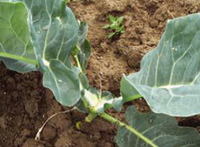
When the terminal bud does not develop or gets broken or eaten away by the insects, the condition is called 'blindness. In other words the plant grows without the terminal bud with no formation of curd or head. The leaves become large, dark green and leathery. These types of plants should be removed from the field.
Internal tip burn
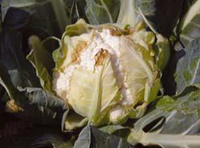
Tipburn is a nonpathogenic internal disorder that is associated with the death of leaf tissue, usually along the leaf margins in the interior of the head. At first the tissue turns tan or light brown, but later may appear to be dark brown or even black. The affected tissue loses moisture and takes on a papery appearance. The extent of the symptoms may vary from a narrow band along the leaf margin(s) of one or a few leaves to a rather extensive zone involving a number of leaves. The condition is not progressive, but does become increasingly evident as head maturity approaches. If an affected head is harvested at an early state of maturation, little evidence of the disorder may be observed. For this reason, fresh market cabbage does not as often show visible symptoms of tipburn as do more-mature processing cabbage heads. Affected tissue may be invaded by secondary pathogens (i.e., bacterial soft rot), which can cause further breakdown. Because tipburn cannot be detected externally, the head must be cut open to determine whether the disorder is present
Phosphorus
Pigmentation in old leaves; curd size and quality will be affected
Correction measure Soil application of recommended dose phosphorus.
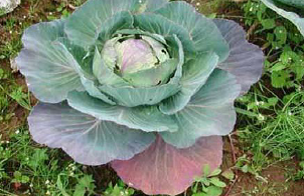
Zinc
Young leaves become small; curd color will be affected.
Correction measure: Foliar spray of ZnSO4 @ 0.5%
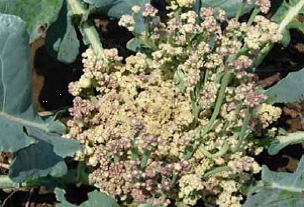
IPM for Cabbage and Cauliflower
To know the IPM practices for Cabbage & Cauliflower, click here.
Source: NIPHM, Directorate of Plant Protection, Quarantine & Storage
Last Modified : 3/13/2020
This topic covers information about Cabbage & Caul...
This article provides an overview of seven common ...
This topic covers information about Cabbage and Ca...
This topic covers the information related to Disab...
